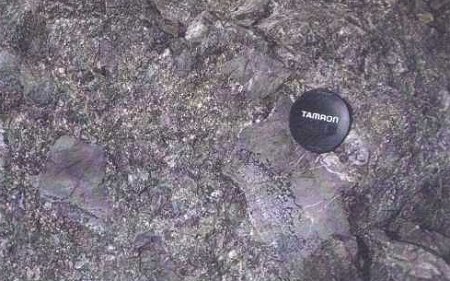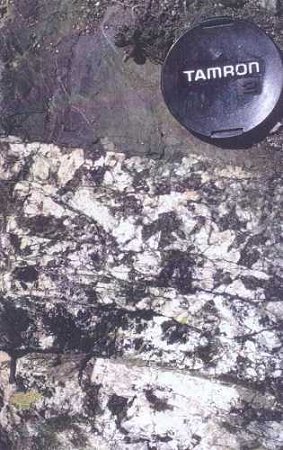
Remnants of the floor of the old ocean of Tethys are now caught up in the Alpine mountain belt. Generally these ophiolites are highly dismembered so that nowhere is there a continuous section up through the old oceanic crust. But fragments remain.

Much of the inner parts of the Alps, such as here on the mountain of La Grivola contain metamorphosed sediments and meta-basaltic intrusions. In this case these rocks have been subducted so that they record High Pressure (eclogite) metamorphic facies. Subsequent uplift and erosion has exposed them at the modern surface of the Earth.
In some special places in the western Alps fragments of ophiolite can be found which retain the original minerals and the original igneous structures that they acquired on the floor of the Tethys ocean. Amongst the best preserved are those at the Montgenevre ophiolite near the town of Briancon. This includes pillow lavas, hyaloclastites and sediments of the ocean floor. These upper parts of the ocean crust rest upon gabbros which are cross-cut by dolerite sheets. However, even here the classic architecture of oceanic crust is not found. Some geologists have argued that the oceanic crust of this part of Tethys was not like that of the classic ophiolites.

![]() Pillow
basalts at the mountain of Le Chenaillet, French Alps.
Pillow
basalts at the mountain of Le Chenaillet, French Alps.

![]() Glassy
basalt derived from submarine quenching and fragmentation of basic lavas -
called Hyaloclastite. From Le Chenaillet, French Alps.
Glassy
basalt derived from submarine quenching and fragmentation of basic lavas -
called Hyaloclastite. From Le Chenaillet, French Alps.

![]() Dolerite
dark cross-cutting coarse gabbro. These intrusives retain much of their
igneous mineralogy and structure despite now lying within the Alpine mountain
belt. From Le Chenaillet, French Alps.
Dolerite
dark cross-cutting coarse gabbro. These intrusives retain much of their
igneous mineralogy and structure despite now lying within the Alpine mountain
belt. From Le Chenaillet, French Alps.